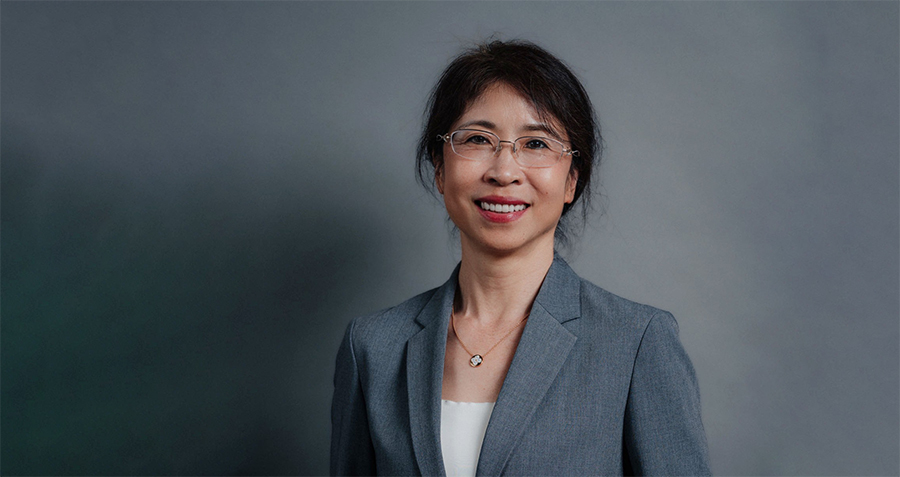In the offices of Silicon Valley and the skyscrapers of Wall Street, a curious phenomenon persists. With a few exceptions, Asian Americans, long celebrated as academic overachievers and model employees, remain conspicuously absent from the uppermost echelons of corporate leadership. This so-called “bamboo ceiling”—a term coined to describe the barriers faced by Asian Americans in professional advancement—has proven stubbornly resistant to change, even as diversity efforts gain momentum in other areas.
The bamboo ceiling is a complex phenomenon, influenced by both external societal factors and internal community dynamics. Separate research by Prof. Jackson Lu of MIT Sloan School of Management and Alan Chen (Assistant Dean, CKGSB) both shed new light on the cultural, social and psychological factors contributing to Asian American underrepresentation in leadership roles. Our objective is to explore these multifaceted challenges and potential solutions.
The numbers tell a stark tale. Work published in the Harvard Business Review shows that Asian Americans comprise 12% of the professional workforce, yet hold just 5% of executive positions in major corporations. They are the least likely racial group to be promoted into management roles, even in tech companies where they are heavily represented at entry levels.
This disparity is all the more striking given Asian Americans’ vaunted academic credentials and work ethic. They are overrepresented at top universities and have the highest median income of any racial group in America. By many metrics, they appear primed for professional success. Yet something seems to stall their ascent to the highest corporate ranks.
The reasons for this disconnect are complex, rooted in cultural differences, unconscious bias, internal community dynamics and systemic barriers. But as diversity becomes an ever more pressing priority for companies, the underrepresentation of Asian Americans in leadership roles is drawing renewed scrutiny. Some see it as the next frontier in the push for more inclusive workplaces. Others argue it reveals fundamental flaws in how corporate America evaluates and promotes talent.
Interestingly, within the Asian American community, those of South Asian (especially Indian) origin have seen notable success in breaking through to CEO roles at several iconic companies. Examples include Satya Nadella at Microsoft, Sundar Pichai at Google, Shantanu Narayen at Adobe, Arvind Krishna at IBM and Indra Nooyi, former CEO of PepsiCo. This success raises questions about the specific cultural, educational, or social factors that might contribute to their advancement compared to other Asian subgroups. Their experience in breaking through the bamboo ceiling may also offer lessons to other Asian American leaders eager to make the same journey.
Cultural challenges
The influence of Confucian values on East Asian leadership styles cannot be overstated. Research highlights how principles of harmony, respect for authority, and group consensus can conflict with Western leadership expectations of assertiveness and individual initiative.
This, and other, cultural mismatches often manifest in subtle ways. Asian Americans may be less inclined to speak up in meetings, promote their own accomplishments, or challenge superiors—behaviors that can be read as passive or unambitious in American corporate settings.
Raj Gupta, former CEO of Rohm and Haas, provides deeper insight into the cultural adaptation required. “When I was humble, people assumed I was not capable,” he recalls. “I had to consciously adapt my communication style to be seen as leadership material. It’s about understanding the unwritten rules of American corporate culture, from networking to self-promotion, which often run counter to our upbringing.”
Still, Asian Americans who do adopt a more assertive style may face backlash for violating stereotypes. “When I started speaking up more, I was labeled as aggressive,” says one female executive in Alan Chen’s research. The double bind is particularly acute for Asian American women, who must navigate both racial and gender stereotypes.
Bias in the boardroom
Unconscious bias and outright discrimination also create significant challenges for Asian Americans. Despite being seen as competent and hardworking, Asian Americans are often viewed as lacking leadership qualities like charisma or vision.
A so-called model minority stereotype can pigeonhole Asian Americans into technical roles, overlooking their potential for strategic leadership positions. It may also foster complacency about their underrepresentation in upper management.
More insidious forms of bias also persist. Some Asian Americans report being passed over for client-facing roles or important assignments due to assumptions about their cultural fit or communication skills. Others describe feeling isolated from informal networks and mentorship opportunities crucial for advancement.
The geopolitical climate adds another layer of complexity. Rising tensions between the US and China have fueled suspicion of Chinese Americans in some quarters, potentially hampering their career prospects. “You have to be mindful that your performance is not just a reflection of you, it can be a reflection of the broader race [between US and China],” cautions one executive.
Internal community dynamics
Professor Lu’s study reveals a striking contrast between East Asian and South Asian professional networks. While South Asian professionals often form strong, supportive clusters within organizations, East Asian professionals often tend to be more isolated.
This lack of cohesion among East Asians is exacerbated by historical tensions and distrust between different ethnic groups. As one Chinese American executive observed in Alan Chen̓s research “There’s distrust within the Asian community as well, say between Japanese Americans and Korean Americans and Chinese Americans.”
Within the South Asian community, caste-based discrimination—actual as well as perceived—can play a role in perpetuating hierarchies and limiting opportunities for some professionals. These internal divisions can hinder collective efforts to advocate for greater representation in leadership roles and mentor the next generation of Asian American leaders.
Systemic barriers
Structural issues in how companies evaluate and promote talent may disadvantage Asian Americans. Traditional leadership pipelines and assessment criteria often favor traits more common in Western cultures, like extraversion and self-promotion.
“The way we define leadership in this country is very much based on white male norms,” notes Michael Useem, an emeritus professor of management at the Wharton School of the University of Pennsylvania. “This isn’t just about communication styles or assertiveness,” he notes. “It’s about how we conceptualize leadership itself.”
This can lead to Asian Americans being overlooked for leadership roles even when they possess the necessary skills and experience, and Useem suggests that companies need to reevaluate their entire leadership development pipeline, from recruitment to promotion criteria, to address these systemic biases.
The lack of representation in existing leadership also creates a self-perpetuating cycle. Without visible role models or mentors who understand their specific challenges, aspiring Asian American leaders may struggle to envision themselves in top roles or navigate the unwritten rules of advancement.
Research shows that companies with more diverse leadership teams tend to outperform their peers. By failing to cultivate Asian American talent at the highest levels, corporations may be missing out on valuable perspectives and market insights.
The road ahead
Despite these chronic challenges, there are glimmers of progress. A handful of high-profile Asian American CEOs have risen to prominence in recent years, potentially paving the way for others. Some companies are also beginning to recognize the bamboo ceiling as a diversity issue deserving of targeted attention.
Initiatives like mentorship programs, leadership development workshops, and employee resource groups aimed at Asian Americans are gaining traction in some organizations. These efforts aim to provide the networking opportunities, visibility, and skill development that can help bridge the gap to senior leadership.
Companies need to examine their own biases and systems, including critically examining their promotion practices and leadership criteria, rooting out implicit biases that may disadvantage Asian Americans. This involves rethinking traditional definitions of leadership to value a broader range of styles and strengths.
In a September interview with Time, Lisa Su, CEO of Advanced Micro Devices (AMD), offers a striking example of Asian American leadership success in the tech industry. Su, who has led a remarkable turnaround at AMD over the past decade, emphasizes the importance of making strategic bets in technology and fostering key partnerships.
Under her leadership, AMD has significantly expanded its AI capabilities through strategic acquisitions and product development.
Addressing the underrepresentation of women in tech leadership, Su suggests giving talented individuals big opportunities to shine. “My philosophy is that the best way—and it’s not just about women, it’s about talent in general—is to give great people big opportunities and let them shine,” Su told Time. Her success story and approach to leadership and diversity offer valuable insights for aspiring Asian American leaders in the tech industry.
But Asian Americans themselves also need to play a role in pushing for change. They may need to step outside their comfort zones, actively seeking out stretch assignments and visibility. Building strong networks and seeking out mentorship, both within and outside their cultural communities, can provide crucial support and opportunities.
Wayne Ting, CEO of Lime, shares his own experience: “My job responsibility and scope given to me was the Asia market, which makes sense, which I am really good at. But I tried to take on clients from different markets, say European markets or Middle Eastern markets or even the United States.” Ting’s approach highlights the importance of actively seeking opportunities beyond one’s comfort zone or assigned role.
Organizations can support these efforts by creating affinity groups that bring together diverse Asian American professionals and fostering a culture of inclusive mentorship. As one executive advised, “We need to unite as a community. It’s through supporting each other and showcasing our collective strengths that we can change perceptions and create more opportunities for leadership.”
But these must be coupled with broader cultural change to create truly inclusive environments where diverse leadership styles can thrive.
Prasad Kalyanaraman, Vice President at AWS, stresses the importance of community and strategic positioning. “Strategic posturing is key,” he advises. “It’s really important for everyone to unite together within the Chinese American community in order to have better recommendations from society.” He suggests developing soft skills and leadership presence, on top of network building.
Education also plays a role. Business schools and executive education programs can help by incorporating more diverse perspectives on leadership and providing targeted support for Asian American students navigating career advancement.
Breaking through
Ultimately, cracking the bamboo ceiling is not just a matter of fairness, but of unleashing untapped talent. In an increasingly global and competitive business landscape, companies that can harness the full spectrum of their employees’ strengths will have a decisive edge. For corporate America, learning to nurture Asian American leadership talent may be key to staying ahead in the 21st Century.
Implementing these steps requires a long-term commitment and significant cultural shifts within organizations. However, the potential benefits— including increased innovation, improved decision-making, and access to a broader talent pool—make this investment worthwhile.
Companies that successfully break the bamboo ceiling not only create more equitable workplaces but also position themselves to better understand and serve increasingly diverse markets. In an era of global competition and rapid change, the ability to nurture and leverage diverse talent, including Asian American leaders, may well become a key competitive advantage.
As Stephanie Mehta, CEO of Mansueto Ventures, wrote in the Modern CEO newsletter in April 2024, quoting Bing Chen, co-founder and CEO of Gold House, an Asian American advocacy group, “When traditional systems don’t afford consistent opportunities to top talent, top talent will be forced to find another way—and often does. When someone else doesn’t want you, you build your own house and hopefully let everyone else in.” The challenge now is to ensure that the house has room at the very top for leaders of all backgrounds.
“We have to do more to speak up, have a louder voice, and not be afraid to challenge,” says Ting.
East Asian American Leadership Styles: Breaking the Mold
These leaders demonstrate that there’s no one-size-fits-all approach to Asian American leadership. They’ve succeeded by blending cultural strengths with adaptability to American business norms, challenging stereotypes along the way. Their stories provide valuable models for aspiring Asian American leaders and underscore the potential benefits of greater diversity in corporate leadership.
While the bamboo ceiling remains a significant challenge, a new generation of East Asian American leaders is reshaping perceptions, based on their public talks, of what leadership looks like. Here are some notable examples:
Jensen Huang, CEO of Nvidia, is known for his demanding leadership style characterized by high expectations and a relentless pursuit of perfection. Huang emphasizes intellectual honesty, encouraging employees to admit mistakes and learn from them. He believes in a hands-on approach, often engaging directly with employees to provide guidance. Huang advocates for a flat organizational structure to facilitate open communication and quick information flow. He practices inclusivity, ensuring every team member has a voice, which fosters respect and loyalty.
Lisa Su, CEO of AMD, focuses on fostering innovation and strategic decision-making. Under her leadership, AMD has developed influential products like the Ryzen processors, significantly boosting its market share. Su’s leadership style is marked by a commitment to technical excellence and a focus on empowering teams to drive technological advancements.
Eric Yuan, CEO of Zoom, has a leadership style that blends Eastern and Western values. Yuan emphasizes customer happiness, humility, and continuous self-improvement. He values self-learners and self-motivators, believing in hiring people with potential who can grow with the company. Yuan’s leadership during the pandemic was marked by empathy and adaptability, ensuring Zoom’s rapid growth while maintaining user trust and satisfaction.
Tony Xu, CEO of DoorDash, emphasizes a customer-centric approach and operational efficiency. His leadership style is focused on innovation and scaling operations to meet customer needs effectively. Xu has led DoorDash to become a leading player in the food delivery industry, particularly during the pandemic.
A Corporate Checklist
Breaking through the bamboo ceiling requires a multifaceted approach that addresses both external biases and internal community dynamics. By fostering greater cohesion, mentorship, and cross-cultural understanding within Asian American communities, while also challenging societal stereotypes and biases, organizations can create a more inclusive leadership pipeline in corporate America.
For companies serious about dismantling the bamboo ceiling, here is a checklist of specific steps organizations can take to help Asian American high-potential leaders advance into the C-suite:
• Reassess Leadership Criteria
Companies should critically examine their definition of leadership potential. Traditional Western leadership traits like assertiveness and self-promotion may inadvertently disadvantage Asian American candidates. Expand criteria to value diverse leadership styles, including collaborative approaches and quiet strength. This reassessment should permeate all levels of the organization, from entry-level hiring to C-suite promotions.
• Implement Bias Training
Mandatory bias training for all employees, with a specific focus on stereotypes affecting Asian Americans, can help combat unconscious prejudices. This training should cover topics like the model minority myth, cultural differences in communication styles, and the impact of bamboo ceiling stereotypes on career advancement.
• Establish Mentorship Programs
Create formal mentorship programs that pair Asian American high-potentials with senior executives, including non-Asian mentors. These relationships can provide crucial guidance on navigating corporate culture and accessing informal networks. Ensure mentors are trained to understand the unique challenges faced by Asian American professionals.
• Sponsor High-Visibility Projects
Actively assign Asian American employees to high-profile projects and client-facing roles. This exposure can help combat stereotypes about Asian Americans lacking leadership qualities and provide opportunities to demonstrate strategic thinking and interpersonal skills.
• Develop Tailored Leadership Programs
Design leadership development programs specifically addressing the challenges faced by Asian American professionals. These could include modules on executive presence, strategic communication, and navigating cultural differences in the workplace.
• Create Employee Resource Groups (ERGs)
Support the creation and growth of Asian American ERGs. These groups can provide peer support, networking opportunities, and a platform for raising awareness about bamboo ceiling issues within the organization.
• Set and Track Diversity Goals
Establish clear, measurable goals for Asian American representation at all levels of leadership. Regularly track and report on progress, holding senior leadership accountable for achieving these targets.
• Review Promotion Processes
Audit promotion processes for potential biases. Implement structured interview processes and diverse evaluation panels to ensure fair consideration of Asian American candidates for leadership roles.
• Encourage Cultural Fluency
Foster an organizational culture that values cultural fluency. Encourage all employees, especially senior leadership, to develop a deeper understanding of Asian cultures and communication styles.
• Provide Executive Coaching
Offer executive coaching to high-potential Asian American employees. This personalized support can help individuals navigate specific challenges and develop strategies for career advancement.
• Create Stretch Assignments
Deliberately create stretch assignments for Asian American employees that push them out of their comfort zones and allow them to develop and showcase leadership skills.
• Address Intersectionality
Recognize and address the unique challenges faced by Asian American women, who often encounter both racial and gender barriers in their career progression.
• Partner with External Organizations
Collaborate with external organizations focused on Asian American professional development, such as Ascend or the National Association of Asian American Professionals. These partnerships can provide additional resources and networking opportunities.
• Celebrate Success Stories
Actively highlight the achievements and career paths of successful Asian American leaders within the organization. These stories can serve as powerful role models and challenge existing stereotypes.
• Foster Open Dialogue
Create safe spaces for open discussions about the bamboo ceiling and related challenges. Encourage Asian American employees to share their experiences and insights, using this feedback to inform and refine diversity and inclusion strategies.



















